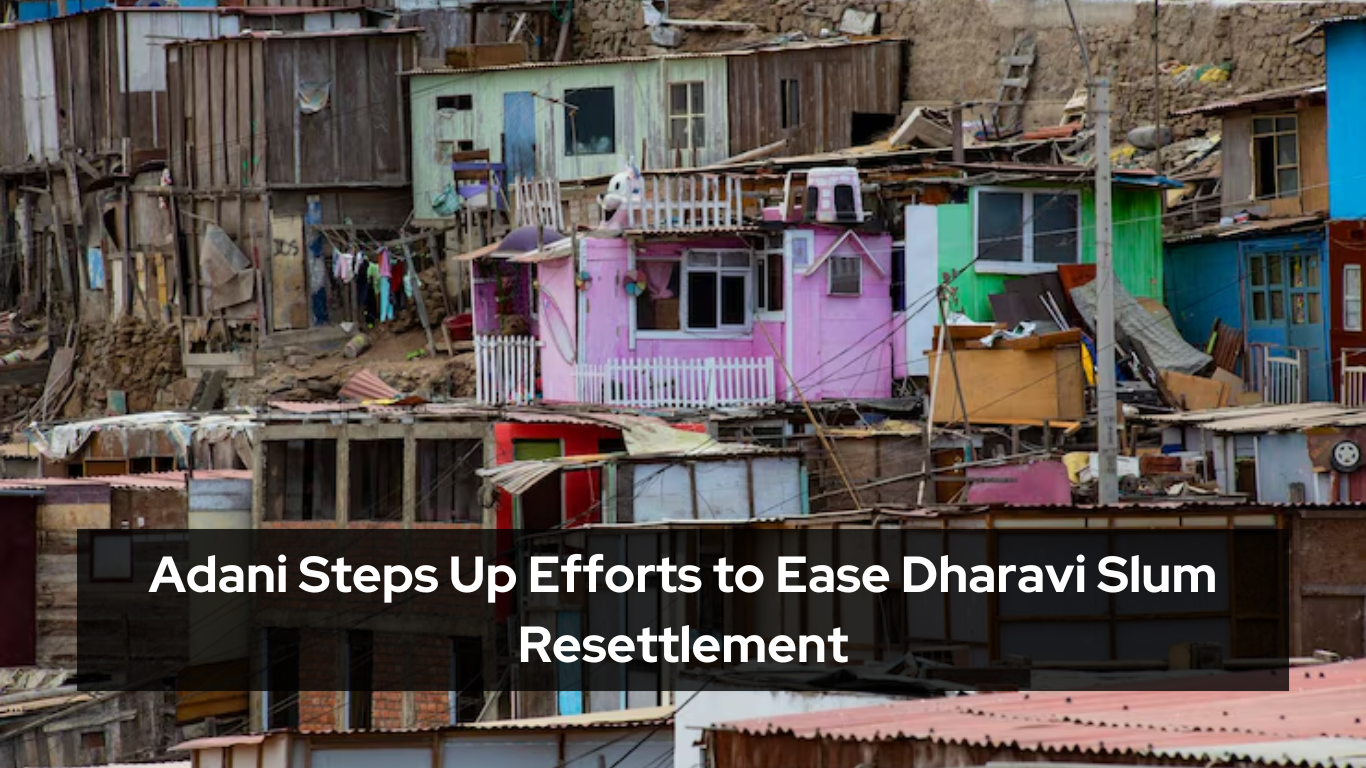The massive Adani Dharavi Redevelopment Project, led by the Adani Group, intends to turn Asia’s biggest slum into a cutting-edge urban hub. The program encompasses not just the construction of new housing units but also the rehabilitation of existing enterprises and the distinctive economic ecosystem of Dharavi.
Ensuring a seamless transition for inhabitants is an essential component of the project. Adani has started gathering data in order to assess who qualifies for relocation. New dwellings will be provided for the residents in the redeveloped area; the location may vary depending on how long they plan to stay. The plans also prioritise bringing about a comprehensive transformation that helps the local economy and the citizens of Dharavi while maintaining the unique character of its diversified business community.
Contents
Incentives to Ease Rehabilitation
The joint venture between the Adani Group and the Maharashtra government, Dharavi Redevelopment Project Pvt. Ltd. (DRPPL), is making every effort to provide incentives to the businesses and residents of the slum cluster so that they will find the process of rehabilitation and resettlement easier and more agreeable. It is expected that the $3 billion project will be finished in seven years.
The State government has not yet authorised the project’s master plan. Still, it will offer upskilling possibilities, vocational training, and educational efforts that should help the locals find new work options. Not only will over a million people live in one of the biggest slum clusters in the world, but a multitude of industries, including waste recycling, textiles, leather goods, and pottery, will also be impacted.
Paving the Way for Enhanced Skills and Empowerment
According to a source, “this comprehensive approach paves the way for enhanced skills and empowerment for the commercial ecosystem in Dharavi while also safeguarding existing businesses.”
DRPPL emphasised just last week the tax refund—a five-year state goods and services tax refund—that qualified business units in the area will get. The tender also included information on this. According to the terms of the offer, the state government’s finance department will reimburse the SGST for commercial and industrial units through the DRP/SRA for five years following the date the OC was issued. When requesting a refund, eligible business and industrial units must submit documentation of their SGST payments.
Exemption from Stamp Duty
Rehabilitated people were promised flats earlier this year with a carpet size of 350 square feet, which is 17% more room than what is typically found in Mumbai slum redevelopments. Toilets and kitchens will be separate in the new apartments.
Furthermore, DRPPL has been excused from paying stamp duty on its first sale of commercial assets. The Adani Dharavi project has also made sure that business districts are properly defined and equipped with the infrastructure they need.
Better Services and Improved Standard of Living
Billionaire Gautam Adani, who won the Adani Dharavi project last year, is determined to finish one of his most ambitious projects on schedule. He has committed to enhancing the slum dwellers’ living circumstances and providing them with improved facilities. The reconstruction of Dharavi has been postponed for more than 20 years. The project is being measured against Singapore’s best practices. The corporation declared in January that it had brought in architect Hafeez Contractor, who will collaborate with US-based design firm Sasaki and UK-based consultant Buro Happold, in addition to specialists from Singapore.
Conclusion
The Adani Dharavi rehabilitation project has many obstacles in spite of its ambitious aims and incentives. Careful planning and community involvement are necessary to ensure inclusive development, preserve livelihoods, and relocate over a million people. This project’s ability to succeed depends on how well displacement issues are addressed, how skill-building opportunities are provided, and how residents’ sense of ownership is encouraged. If carried out carefully, the initiative might improve people’s lives in Dharavi and turn it into a thriving economic center.
A smoother reconstruction is anticipated as a result of the Adani Group’s efforts to offer incentives and expedite the relocation process. Tax rebates, better infrastructure, and upskilling programs may empower citizens and businesses. Even if there are still obstacles to overcome, the project offers Dharavi a rare chance to solve long-standing problems and start a new chapter of development and wealth. The project’s advancement will be closely observed in order to evaluate how well it is preparing the community for a sustainable and inclusive future.



